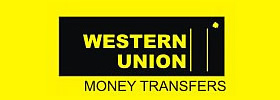Agreement on new measuring instrument requirements to track energy consumption more accurately

Existing rules updated to cover new technology, such as electric vehicle charging equipment.
All producers must start applying the same standards to reduce market fragmentation.
Update will boost development and wider uptake of new technologies and support the green transition.
On Tuesday morning, Parliament’s negotiating team reached a provisional agreement with Member States on new rules on bringing measuring instruments to market.
This update of the existing Measuring Instruments Directive has been eagerly awaited by the industry, which will now have more clarity and motivation to develop and deploy the new technologies that are crucial for Europe’s green goals.
What is new?
The update covers equipment and devices used to measure electricity, gas and oil consumption and widens the existing directive’s scope to cover a broader range of instruments and innovative technologies. The new rules will now cover cooling system meters, for instance, in addition to thermal energy meters. Devices used to measure the consumption of new gases or hydrogen will be included and the update will take into account the quick spread of smart metering. There will be room for greater flexibility on display and remote monitoring, fostering innovative solutions. Maintenance rules for electric vehicle (EV) chargers will also be simpler, making cable replacement easier.
The updated directive will define which aspects of new devices have to be harmonised. Producers will have to abide by these rules to be able to get the mandatory CE marking for their products. More specifically, the elements being harmonised concern device reliability and durability, data security, and protection against data corruption, with set margins of error, etc.
Why is this good for business?
There has been strong market demand for this update. The absence of pan-European norms for the metering systems used in electric vehicle charging cables and hydrogen technology for example has led to differing approaches in the member states and means equipment produced in different countries is not necessarily compatible. With new harmonised EU norms, producers will have common requirements for their goods and this will translate into better market access, because all the products will be usable, compatible and compliant in all EU countries.
What will change for consumers?
When the agreed rules come into effect, the new equipment put on the market will measure households’ energy consumption more accurately, reliably, durably and robustly. This should, over time, also have an effect on energy bills and costs.
Quote
Parliament’s rapporteur for the file Zala Tomašič (EPP, SL) said: “After more than 20 years, this agreement finally brings our measurement rules up to date. It means clearer, harmonised standards for new technologies — so citizens can trust that what they pay for is what they get. I am grateful to all the shadow rapporteurs, their teams, Parliament’s secretariat, and our colleagues in the Council and Commission for the constructive work that allowed us to find a balanced compromise for Member States, industry and consumers alike.”
Next steps
Once the text of the agreement has been finalised and translated into all official languages, it will still have to be approved formally by both the Parliament and the Council. Parliament expects to have the final plenary vote in February/March. The law will then be published in the Official Journal and enter into force 20 days later. Member states will have 24 months to take the new rules into their national law. Then, businesses and member states will have a transition period (30 or 48 months, depending on a type of device) to adapt to the new norms.




